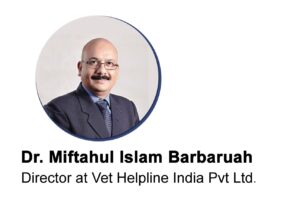- Invest in creating a pool of highly trained groups of public/private pig experts (Husbandry, breeding, nutrition, Health, etc.) and independent producer entrepreneurs.
- Invest in risk mitigation initiatives, such as Emergency Preparedness, Business Continuity Fund, Insurance, etc., to encourage private investment.
- Invest in procurement and maintenance of a suitable purebred population of pigs.
- Promote demand-side intervention for sustained investments, e.g., Food safety control, consumer awareness of local products, and brand development. (including brands of processed products and pork delicacy-based food joints and restaurants)
Institution:
- Strengthen farmers’ institutions and create an autonomous, professionally managed SPV (Special Purpose Vehicle) to implement designed public-private partnership projects with producers and other private stakeholders.
- Strengthen the internal capacity of the Animal Husbandry and Veterinary Department to implement sector-level breeding policy, monitor disease incidence, prepare for emergencies, and provide regulatory oversight of the sector, including enforcement of safe animal movement, live pig trade in physical markets and safe and fair-trade practices (including protection of farmer interest in contract farming)
Infrastructure:
- Strengthen select existing government farms as a part of the created SPV to make them capable of acting as nucleus and multiplier farms.
- Strengthen existing infrastructure (Public / Private) for disease surveillance and evidence-based, risk-based handling of pig health/pork and feed safety threats.
- Promote private sector / community-driven infrastructure for scientific slaughter and pork processing.
- Develop PPP infrastructure for on-farm training of farm supervisors and potential farmers/ entrepreneurs.
Input:
- Support local entrepreneurs for intelligent procurement, stocking and trading related to feed ingredients through the crated SPV for feed cost and quality control.
- Facilitate village-level availability and use of quality biologicals with cold chain
- Regulate the quality/use of animal health products, ensuring the availability of an affordable assortment of drugs/chemicals.
Innovation:
- Promote technology / IT-based tools for better management (both at the farm and the industry level) for GIS-based mapping farms, biosecurity, pollution, animal welfare and resource use-related grading of farms.
- Explore evidence-based, innovative feeding and management practices taking care of consumer demand for pork quality.
- Design technology-supported innovative learning tools to disseminate best practices and encourage interaction between various players in the pig value chain.
Incentives:
- Work with financial institutions for easy credit support and timely delivery of targeted and result-oriented credit-linked subsidies. (including credit guarantees for pig cooperatives)
- Incentivize farms that achieve safe biosecurity, pollution, animal welfare and natural resource use-related grading.
- Incentivize pig cluster-level initiatives for participatory resource planning for ecologically sensitive, sustainable use of natural resources in cluster areas. (ensuring control growth of the pig population within clusters)
- Provide viability gap funding to encourage needed enterprise growth in by-products, trading, and services.
Inclusiveness:
- Provide herd identification cards to nomadic farmers rearing Indigenous pigs and ensure need-based support, such as temporary night shelters and vaccine access.
Prepared by:
Timeline for preparation of this framework is September 2024.
Citation:
Barbaruah Miftahul, 7 ‘I’ framework for pig sector development in Assam, India, The Vet Helpline E-magazine, Category: Livestock Policy, Planning and Projects, Vol XII (2024) ISSN 2454-9282




